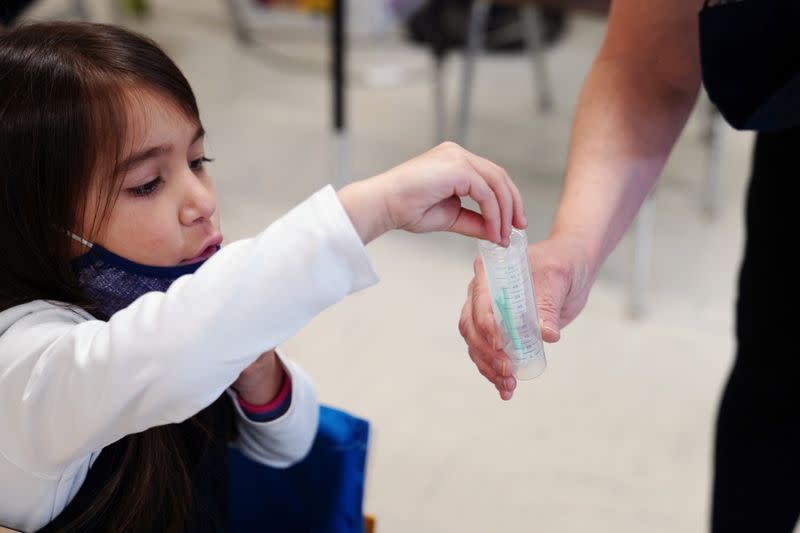By Nancy Lapid
(Reuters) – The following is a summary of some of the latest scientific studies on the new coronavirus and attempts to find treatments and vaccines for COVID-19, the disease caused by the virus.
Long-term COVID-19 effects seen in children
“Long COVID” – a term that refers to effects of the virus that linger for weeks or months – can also be a problem for children, a small study suggests. Doctors at a large Italian hospital followed 129 children and teens with COVID-19 who were otherwise generally healthy. On average, about five months after their diagnosis, only about 42% had fully recovered. About one in three young people still had one or two symptoms, and more than one in five had three or more, according to a report posted on medRxiv on Tuesday prior to peer review. The most common persistent problems were insomnia (reported by 18.6%), respiratory symptoms including chest pain and tightness (14.7%), nasal congestion (12.4%), fatigue (10.8%), muscle pain ( 10.1%), joint pain (6.9%). %), and concentration problems (10.1%). Although these problems were more common in children who had clearly been ill, they also developed in infected young people with little or no symptoms at first. There is growing evidence that restrictive measures to curb the pandemic are having a significant impact on children’s mental health, the researchers acknowledge. Still, their findings suggest that the potential long-term effects of COVID-19 on children should be considered when developing measures to reduce the pandemic’s impact on their overall health. (https://bit.ly/3j8eITL)
Patients’ antibodies target the virus from different angles
Most antibody treatments and vaccines against the coronavirus aim to stimulate an immune response against the spike protein it uses to break into cells. It may be a better approach to target other sites on the virus as well, researchers say. Their study of COVID-19 survivors whose immune systems had generated strong responses to the virus showed that more than half of those antibodies targeted components of the virus other than the spike protein. The most common non-spike targets of the antibodies were the closed capsule in which the virus stores its genetic instructions and specific parts of those instructions, such as pieces of its RNA code. This suggests that non-spike-related antibodies may play an important role in clearing up the virus, the research team said in a paper Thursday on bioRxiv ahead of peer review. In terms of natural immunity, it also suggests that when faced with new spike protein variants, the immune system will have other locations on the virus that it can still remember and attack. A spokesperson for the researchers said their company, Immunome Inc, is developing a cocktail of antibodies that target multiple sites on the virus. (https://bit.ly/3j73nDn)
COVID-19 can affect kidney filtration
COVID-19 impairs the kidneys’ ability to filter waste and toxins in some patients, a new report suggests. Kidney filters usually don’t allow much protein in the urine. Researchers who studied 103 COVID-19 patients found that about 24% of them had high levels of the protein albumin in their urine and 21% had high levels of the protein cystatin C in their urine. About 25% of the patients had a non-infectious piece of the coronavirus in their urine, but none of the samples contained an infectious virus. That suggests the virus particles researchers saw “were a direct result of a filtration abnormality rather than a viral infection of the kidney,” said a report posted on medRxiv on Sunday ahead of peer review. None of the patients had signs of kidney dysfunction, except for the filtration problems. “At this stage, we don’t know whether or not these abnormalities are a sign of long-term consequences,” said study co-author Choukri Ben Mamoun of the Yale School of Medicine. “For this reason, we report these findings and emphasize the need for long-term research into the consequences of this infection.” (https://bit.ly/3oDhHF4)
Open https://tmsnrt.rs/3c7R3Bl in an external browser for an image from Reuters on vaccines in development.
Image: Tracking the Vaccine Race: http://graphics.reuters.com/HEALTH-CORONAVIRUS/VACCINE-TRACKER/xegpbqnlovq/
(Reporting by Nancy Lapid; edited by Bill Berkrot)
Originally published
